Cutting-Edge Services
Discover how the most cutting-edge, minimally invasive techniques available can impact you.
We help your body heal itself.
Some of our specialty services include Regenerative Medicine techniques (such as platelet-rich plasma and regenerative cell injections), ultrasound diagnostics, and biomechanical evaluations and corrections.
Common injuries we treat:
- Shoulder: labrum tears, sprains, bursitis, osteoarthritis
- Elbow: golfer’s and tennis elbow, osteoarthritis
- Wrist: carpel tunnel, sprains
- Hip: Piriformis and IT Band syndrome, labrum tears, bursitis, osteoarthritis
- Knee: chondromalacia, sprains, tears, tendinosis, osteoarthritis
- Ankle and Foot: sprains, osteoarthritis, plantar fascia
- Sacroiliac joint dysfunction/instability
Evaluation Tools
We believe in the big picture. Our cutting edge tools and thorough screenings ensure we understand every dimension of your injury.
 Functional Movement Screening
Functional Movement Screening
What is it?
The FMS/SFMA are a series of movements similar to those used in everyday life and required in athletics. The patient is instructed to perform these movements within their comfort range while being observed.
Why is it used?
Injuries can be both structural and mechanical. We strive for comprehensive care, which is why we not only treat the injury but also look for its underlying causes and any other potential areas of concern. The information we gather during this screening, along with our other injury evaluation findings and interventions, is used to determine a specialized plan of care that will return you to your desired level of activity.
 Musculoskeletal Ultrasound
Musculoskeletal Ultrasound
What is it?
Musculoskeletal ultrasound is cutting edge technology which allows us to see inside the body. Unlike an x-ray that only shows us bones, ultrasound can see soft tissue. Done in real-time at the bedside, we can see joints, ligaments, tendons, cartilage, muscles, and more.
When is it used?
We heavily use ultrasound to help diagnose injuries as well as monitor the progress of healing. Ultrasound takes guessing out of the picture. Not only can it confirm the physical exam, it also allows us to see the extent of the injury. Understanding all that is involved with an injury ensures the most appropriate treatment options are given. Additionally, ultrasound frequently eliminates the need for expensive MRIs. We also use ultrasound every time an injection is performed to help guide the needle into the exact location needed. Guiding injections is critical. This approach allows us to use very small doses of medication because we are confident it is going to the right place.
Treatment Options
We believe in the big picture. Our cutting edge tools and thorough screenings ensure we understand every dimension of your injury.
 Hydro-Dissection
Hydro-Dissection
What is it?
This simple procedure is performed in the office with local anesthetic. Hydro-dissection is the use of a saline solution to free up restricted tissue that has been compressed by other surrounding tissue. The entrapped area is located via ultrasound and the saline is then strategically injected, using water pressure to essentially “peel away” the compressive tissue.
Why is it used?
Tissue such as nerves and fascia frequently become entrapped. This can happen as a result of overuse, injury, or even scar tissue. While stretching and other topical treatments can help free entrapped tissue, hydro-dissection is an effective treatment when those traditional methods fail.
 Platelet-Rich-Plasma (PRP)
Platelet-Rich-Plasma (PRP)
What is it?
Platelet-Rich-Plasma, otherwise known as PRP, is simply a by-product of blood. Typically, a patient’s blood is drawn and placed in a high-velocity centrifuge where it is separated into layers. The layer containing platelets is then injected directly back into the injured site. At ISM we use ultrasound to guide the injection, ensuring the PRP goes exactly where it is needed.
Why is it used?
Platelet cells are unique because they not only promote clot formation, they also start the healing process when an injury occurs. The platelets help form a “scaffold” in injured tissue, signaling the healing process to begin. Equally important, they signal other cells to help clean out, organize, and attach themselves to the “scaffold” to repair the injured tissue.
PRP FAQs
While cortisone is a great pain reliever, it essentially does nothing to heal the condition. In fact, some argue that it can slow the healing process. While pain usually improves significantly with cortisone treatment, this is often transient as the pain tends to return. If you have had a cortisone injection for your condition in the past and your pain was relieved for a short period of time, PRP might be the right treatment for you.
What to expect:
You will be here about 45 minutes total on the day of your procedure. After an injection, the site is bandaged with a simple adhesive bandage. It should stay dry for at least 24 hours. Patients should expect to be sore for a short period (2-5 days) following the procedure.
Downtime:
We generally ask patients to drastically decrease their activity for a few days (typically 2 – 5) following a procedure. For optimal healing, some injuries require immobilization for 2-5 days. Within a week or less, pain levels are generally back to baseline (the level of discomfort experienced prior to the procedure). At that point, patients can return to normal activities.
Pain management:
We do not allow patients to take anti-inflammatory pain medications (such as ibuprofen or Aleve) for 2 weeks following an injection. This is because inflammation helps the healing process in its initial stages. Acetaminophen (Tylenol) may be used. In some cases, a prescription pain reliever is required for a very short period.
Results:
You will begin to notice small improvements 6 – 8 weeks after the procedure. Improvement will continue over the next several months.
 Regenerative Cell Grafting
Regenerative Cell Grafting
What is it?
Regenerative cell grafting (RCGs) refers to your own regenerative cells. We do NOT use embryonic regenerative cells, which are not approved for clinical use. Regenerative cells are simply cells that have the ability to turn themselves into different types of cells.
Why is it used?
It turns out that patients’ own bodies have all the regenerative cells they need to heal even very significant injuries – they just need to be moved to the right place. The body houses many of its regenerative cells in bone marrow. When grafted into tendons, ligaments, and joints, they become the cells that make up those structures and “fill in the gap” left by injury. All injections are performed under ultrasound guidance in order to ensure they are placed accurately. Some attempt to use X-ray to guide injections, but this simply is not accurate enough for regenerative cell graft placement in a joint.
Regenerative Cell FAQs
Regenerative Cells are typically obtained from the body bone marrow. These cells are aspirated (or “sucked”) out of the marrow with a very strong needle and syringe after local anesthetic (or a “numbing shot”) is given. The Bone Marrow Aspirate Cells (BMAC) can then be concentrated and quickly prepared for injection back into the body at the site of injury. Another common way to harvest regenerative cells is body fat. Fat cells contain a very high concentration of regenerative cells. Typically, cells are taken from fat deposits in the belly or flank after local anesthetic injection. The cells are then concentrated and prepared for re-injection just as the BMAC regenerative cells.
What to expect:
You will be here about two hours total for your procedure. Bandages will be applied and need to stay dry for 48 hours. Patients may experience moderate to severe soreness for a short period (2-5 days) following the procedure. Prescribed medication is given to manage pain.
Downtime:
During the first five days following the procedure, movement of the injured area is severely limited. In some cases, the injured area is immobilized. Patients are allowed to slowly return to their normal level of activity after about two weeks. More detailed instructions will be given at the time of your procedure and at your two-week follow up.
Pain Management:
No anti-inflammatory medications are allowed two weeks prior to procedure and four weeks following. Acetaminophen (Tylenol) may be used, and sometimes a prescription pain reliever is required for a very short period. Ice is highly recommended. Pain levels are generally back to baseline (the level of discomfort experienced prior to the procedure) within two to four weeks.
Results:
Improvements will begin around 8-12 weeks post-procedure and continue to progress over a two-year period. We call a 50-80% reduction in a patient’s pain a success.
Yes, regenerative cell grafts work exceptionally well on the appropriate injuries. Regenerative cell injections can be a great alternative to surgery, or an option when other treatments have failed. However, regenerative cells alone simply cannot fix everything—identifying which patients are a good candidate for the procedure is critical to its success. Dr. Reed has been performing regenerative cell grafts since 2009 and is one of the early providers of the procedure in the United States. With an accurate diagnosis and years of experience, we will honestly and expertly discuss with you what type of candidate you are.
No. While younger people do have more regenerative cells than older people, mature regenerative cells still work. The difference is the time it takes to notice the improvement. Just like it takes an older individual longer to recover from an illness, it takes longer to recover from a regenerative graft injection—but the end result is the same.
The answer is a resounding “NO.” regenerative cells, when taken from another source, are processed and then frozen for shipment. Unfortunately, most regenerative cells do not survive that processing phase. These cells are also foreign and will be subjected to your own immune system.
Because we have done so many bone marrow harvests at ISM, we have the process down well. Generally patients only experience minimal discomfort, most rating it a 2/10 on their pain scale.
At this point, most private and commercial insurances do not cover any regenerative cell grafting or other regenerative procedures.
Yes, regenerative cell grafting can be repeated. While we strive to make the procedure a one-time process, you can wear out your new cells just like you wore out your original cells. Hopefully this is several years down the road.
Our goal is to treat your injury with a single procedure. On rare occasions, more than one is necessary.
No. We do not perform any injections along the spine. For these types of injections, we recommend our colleagues in St. Louis at the Bluetail Medical Group.










